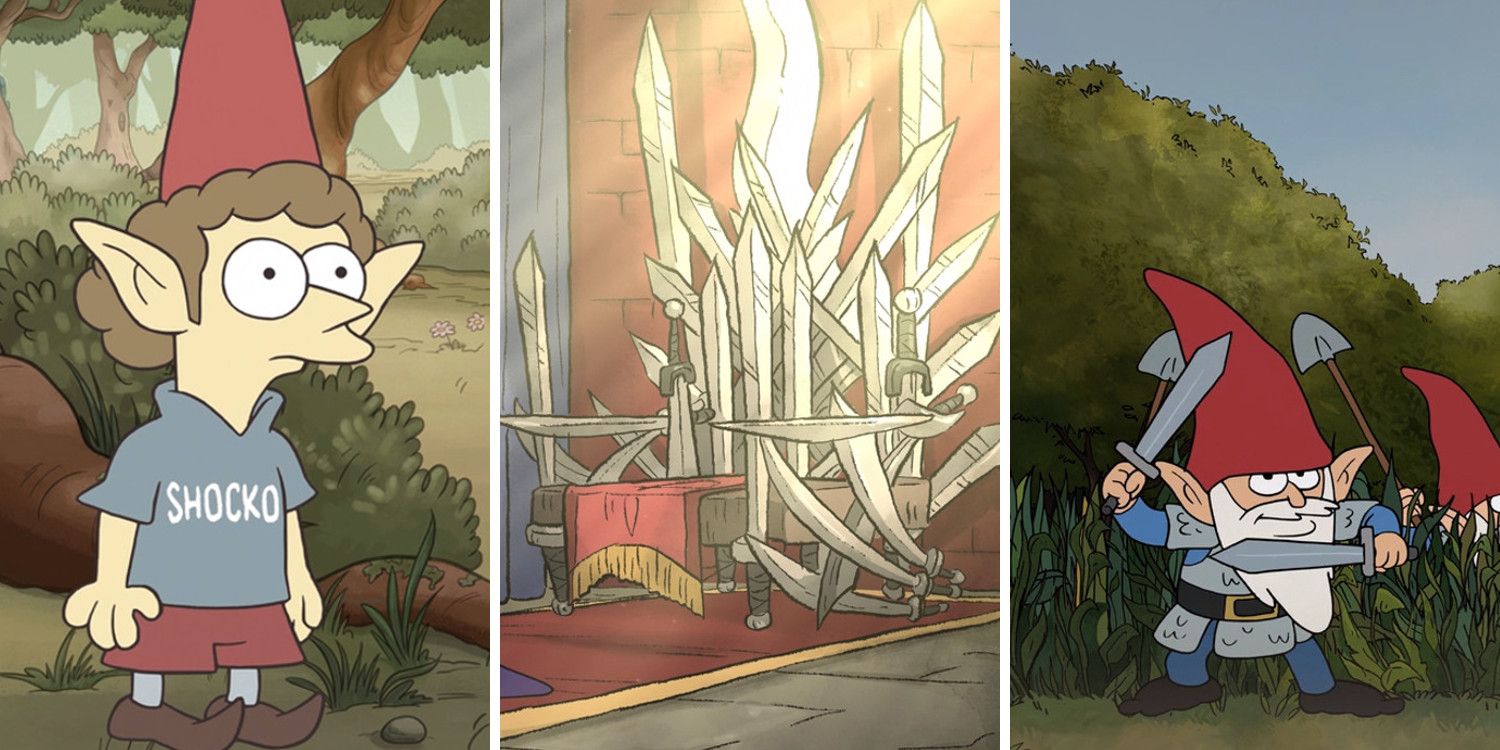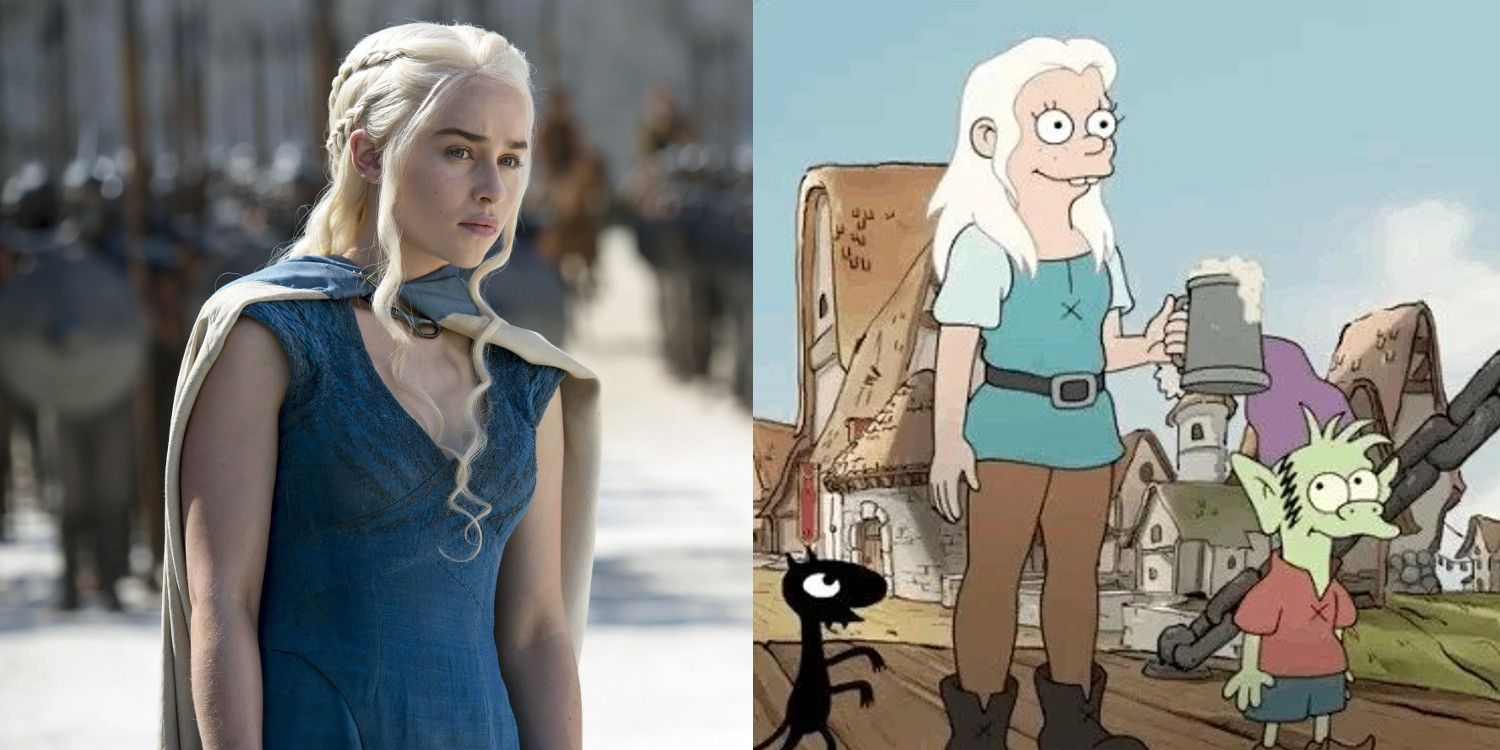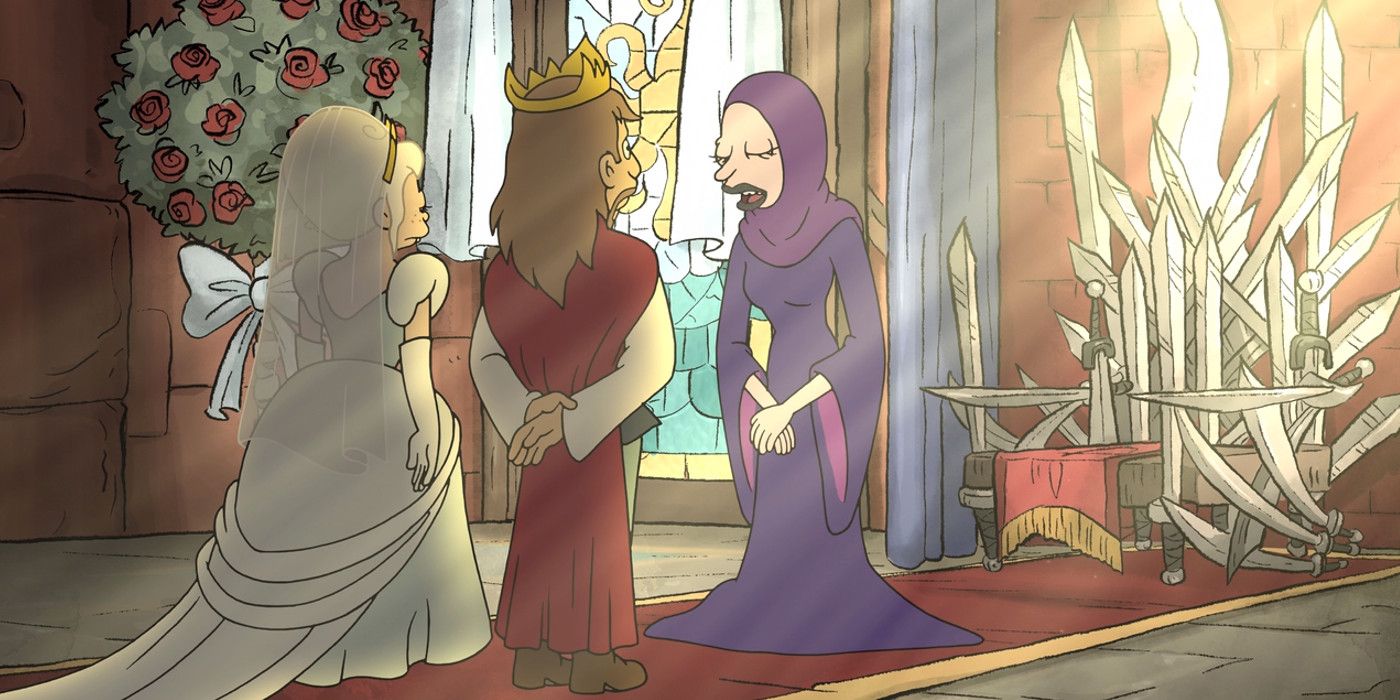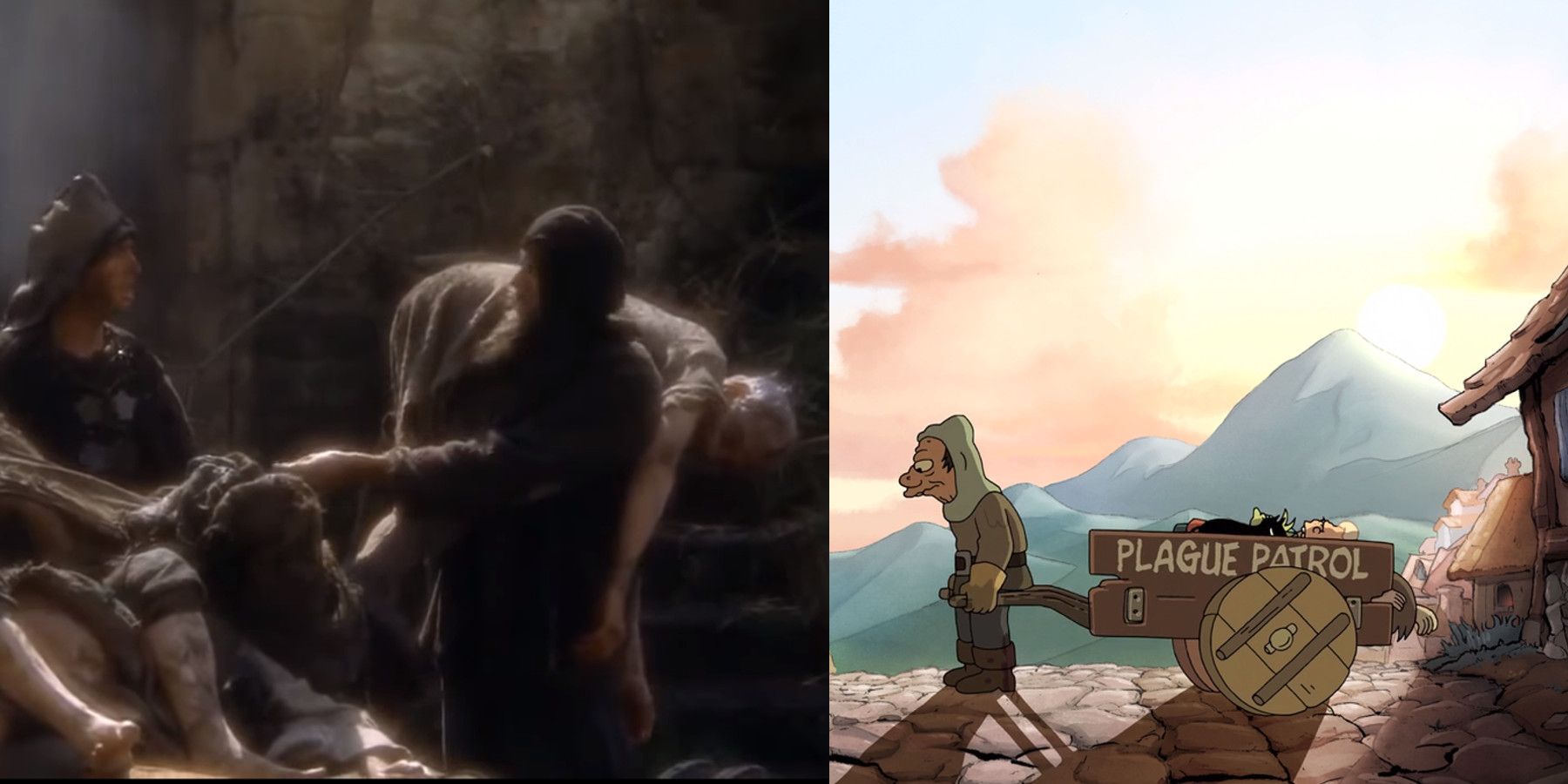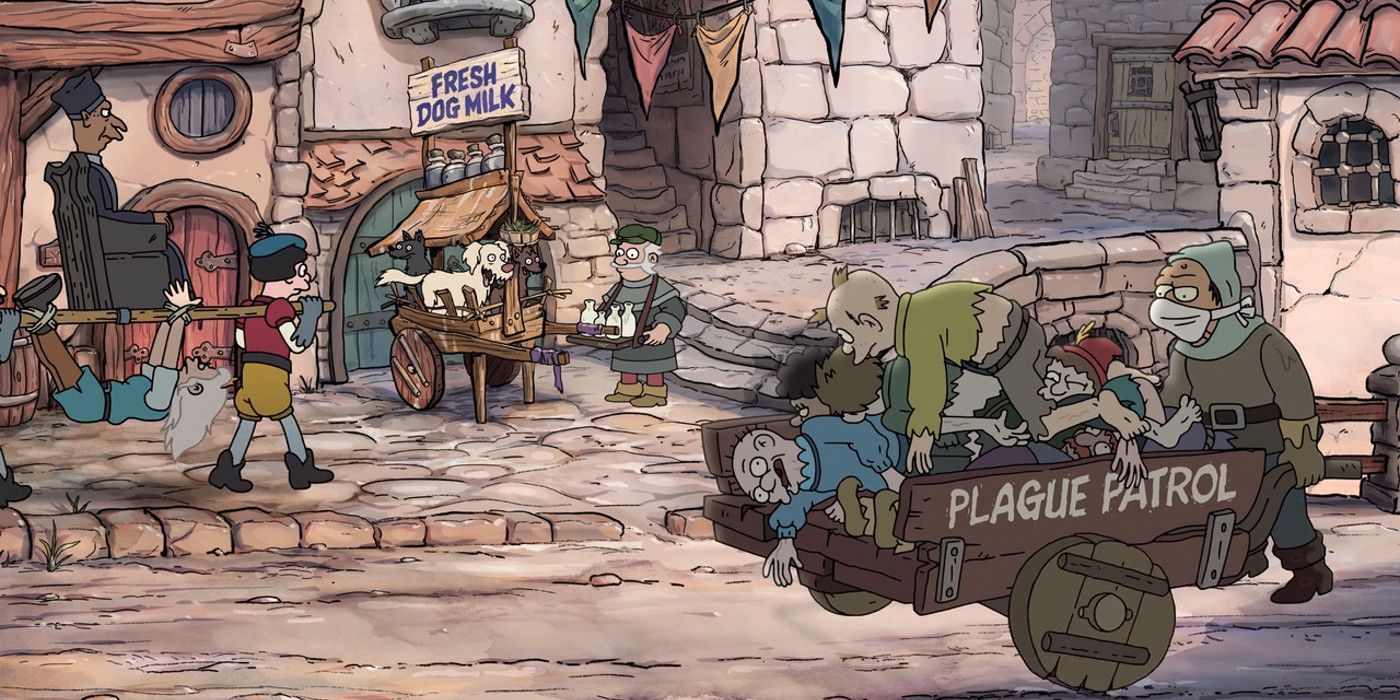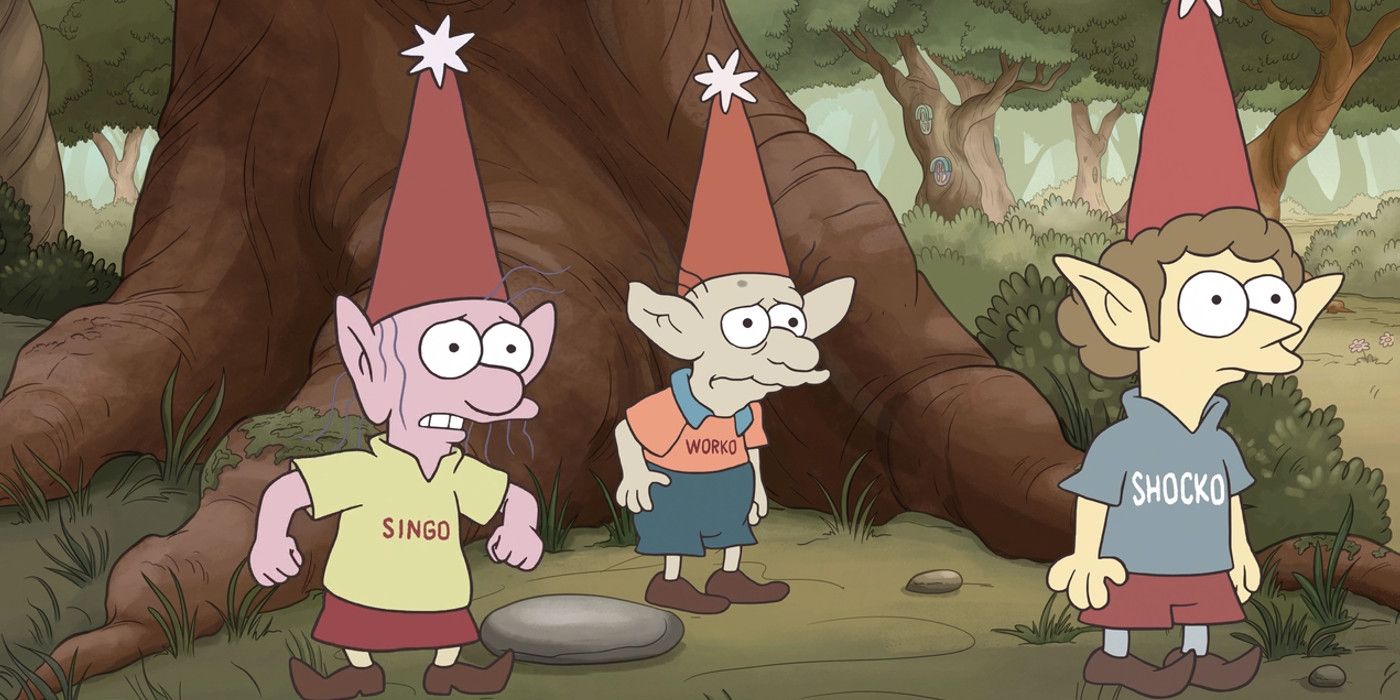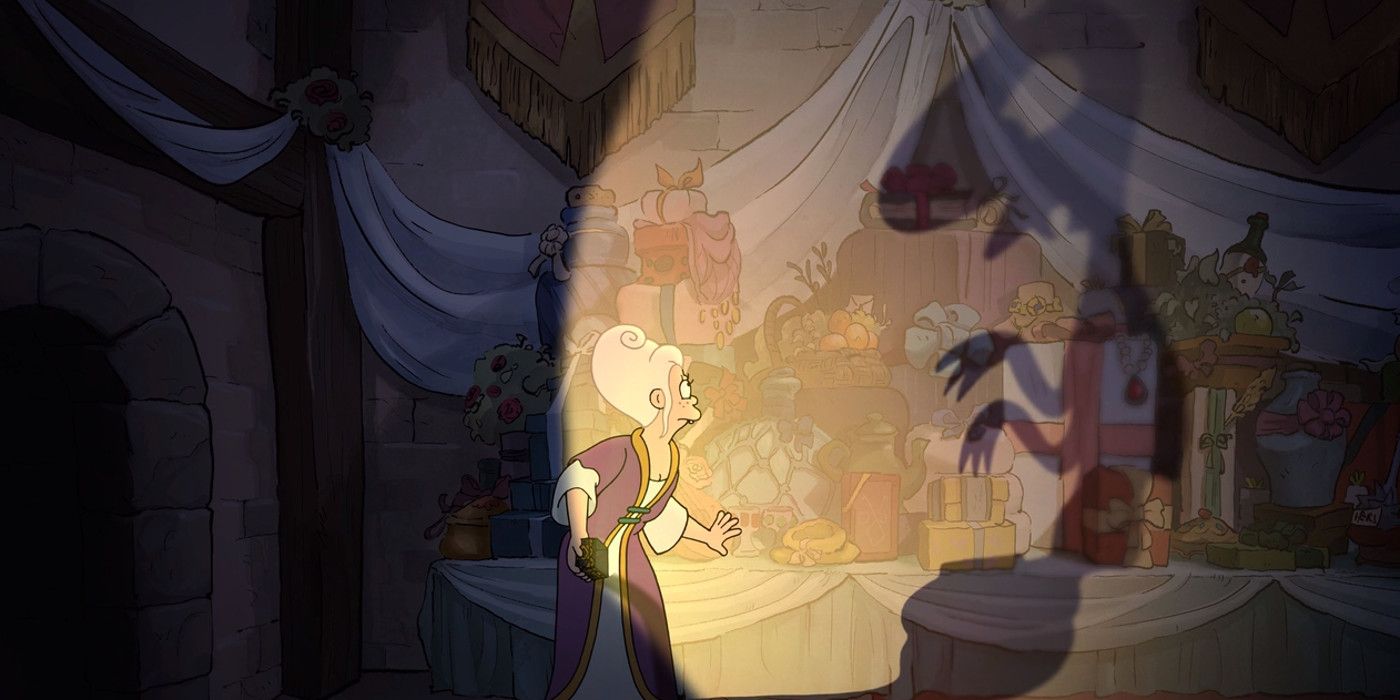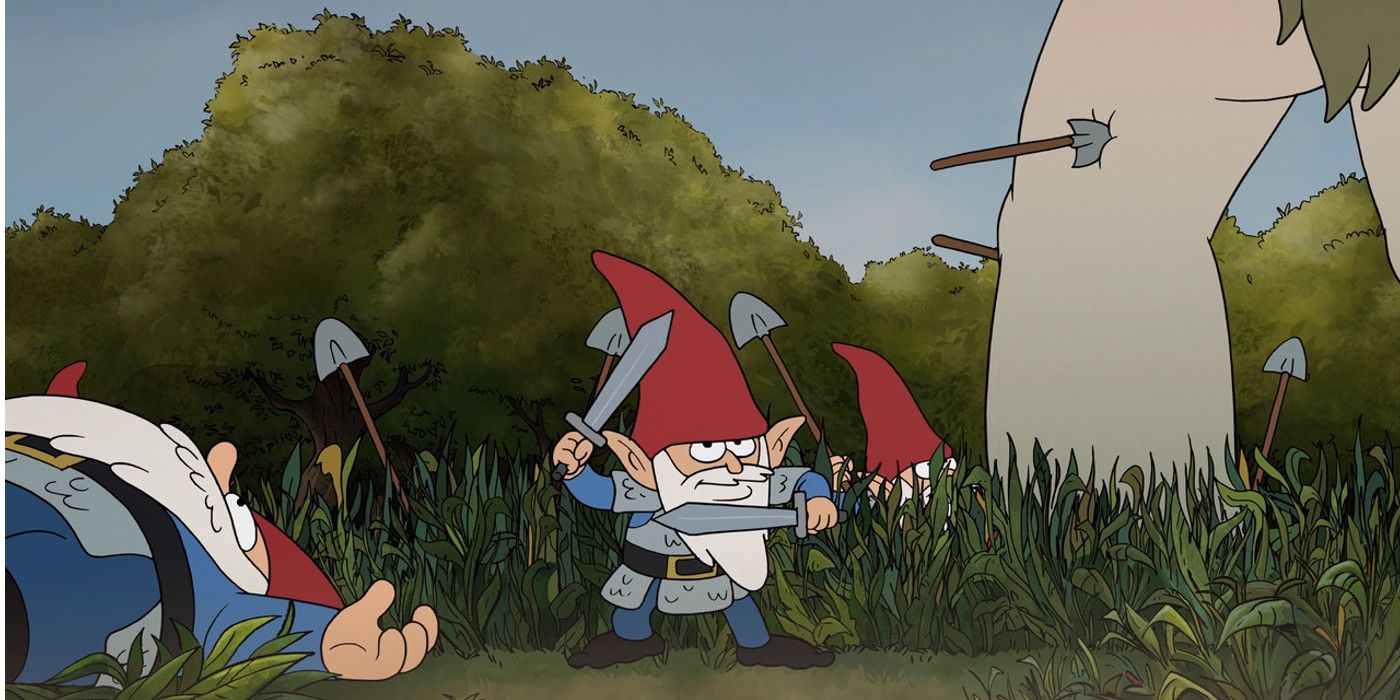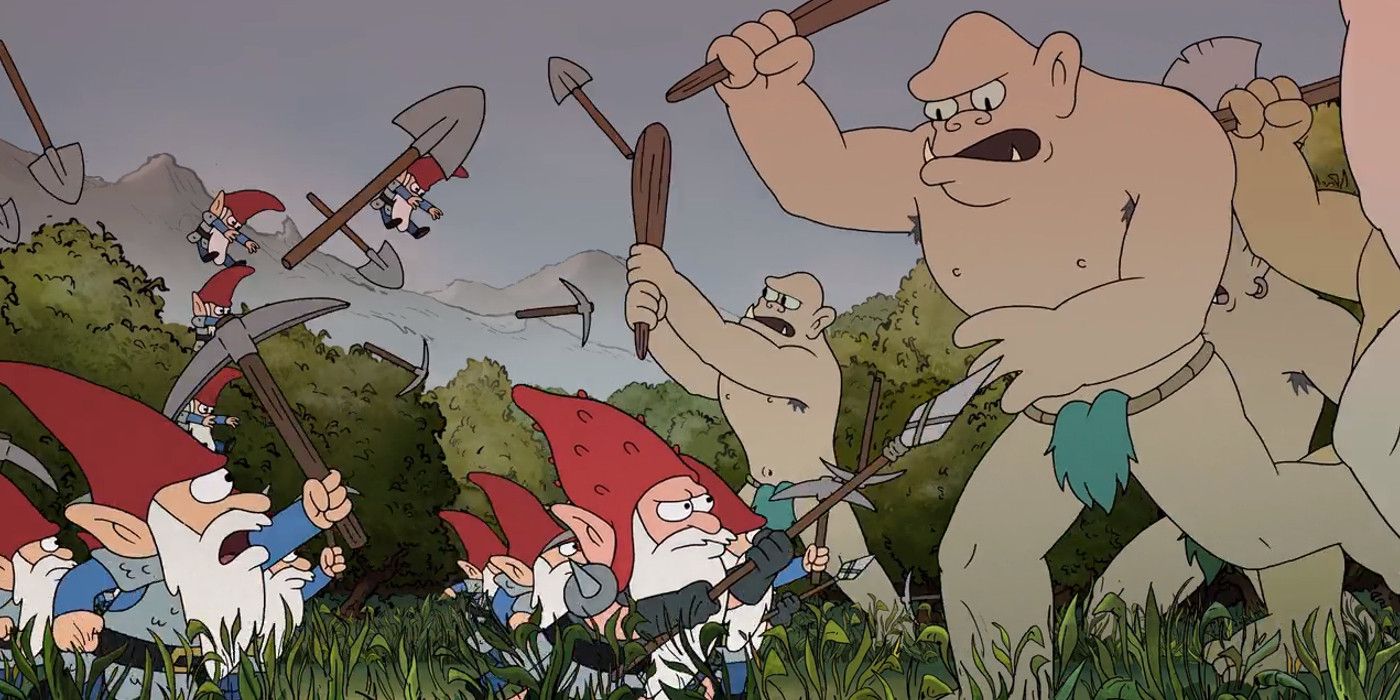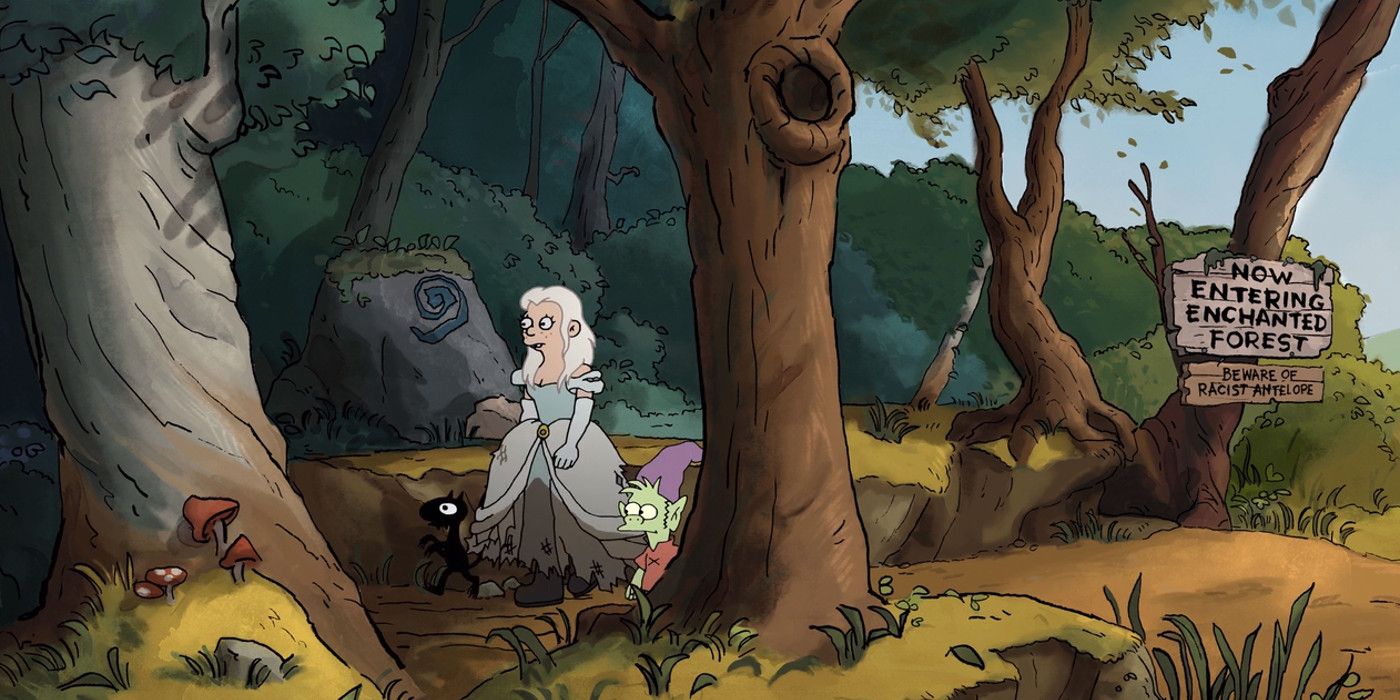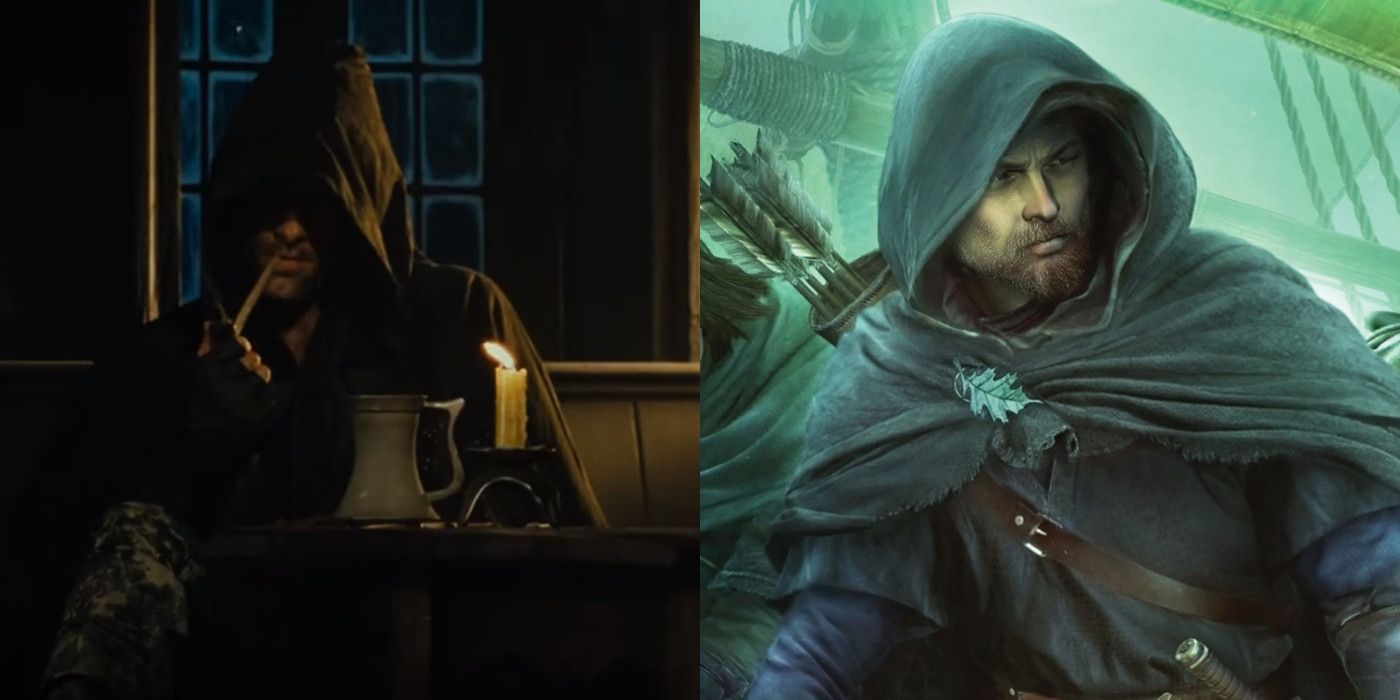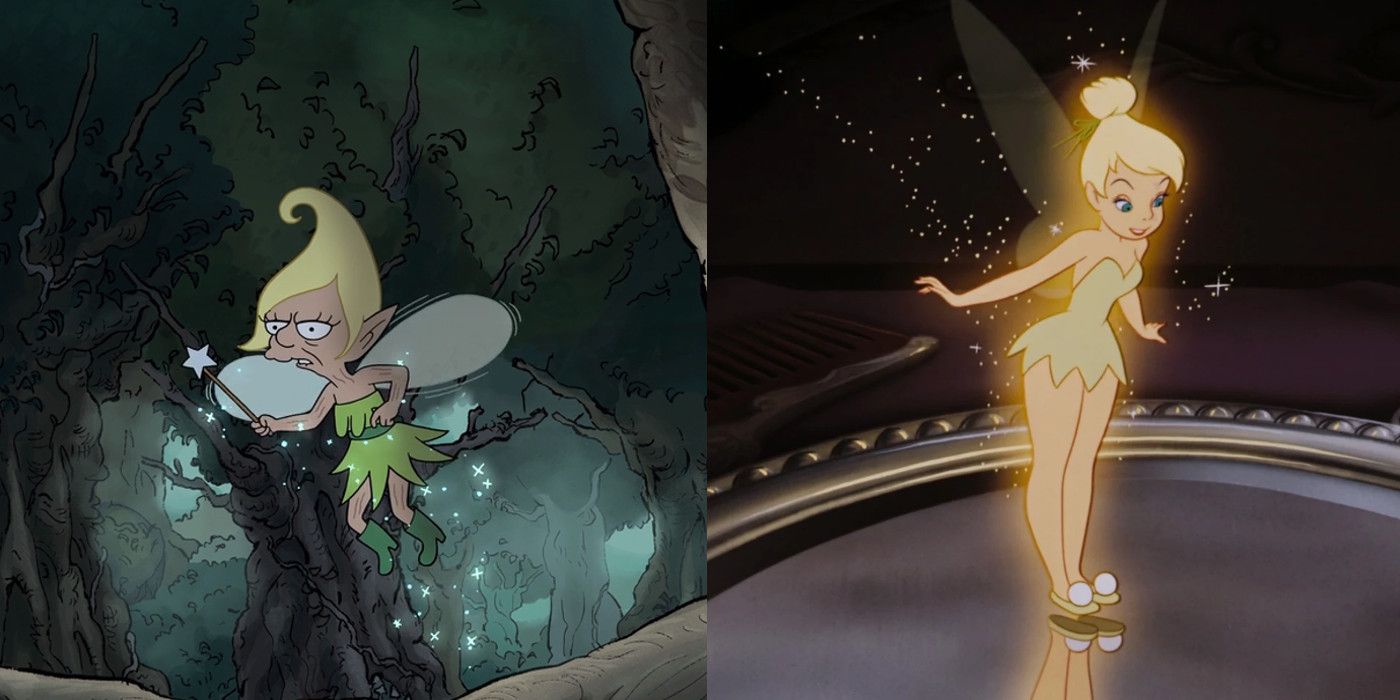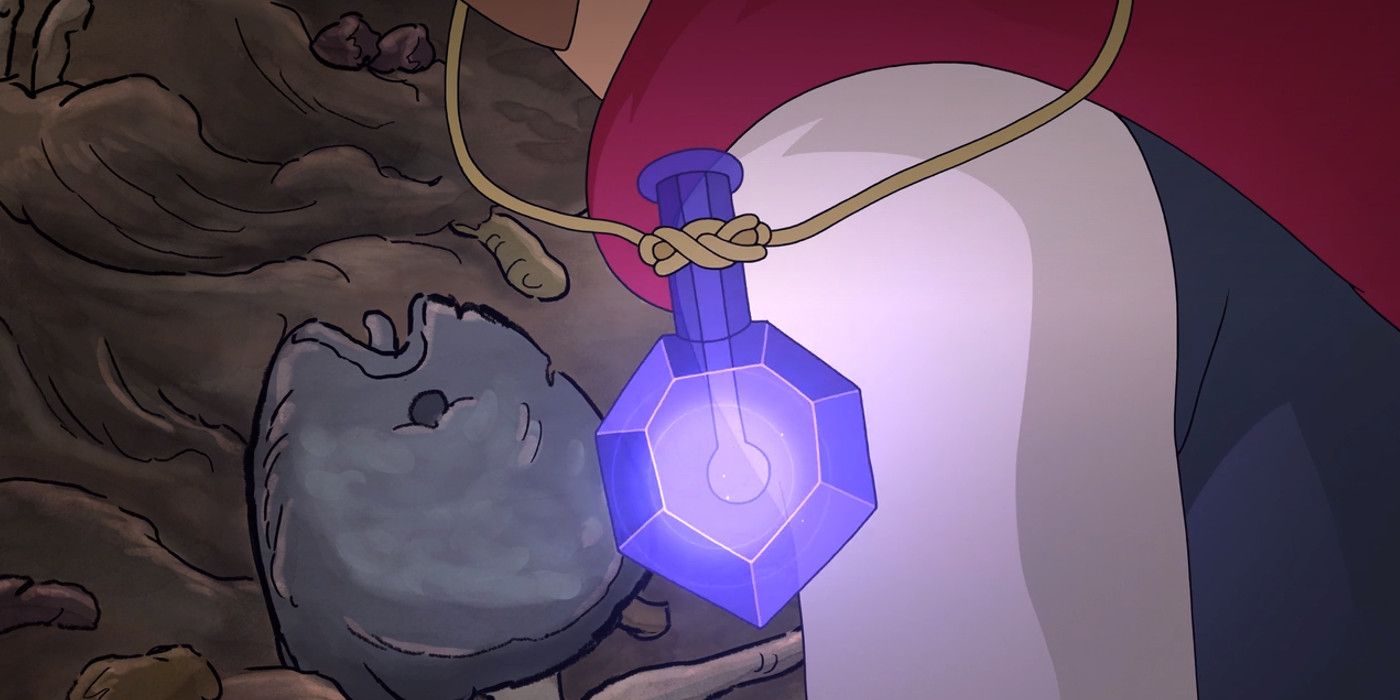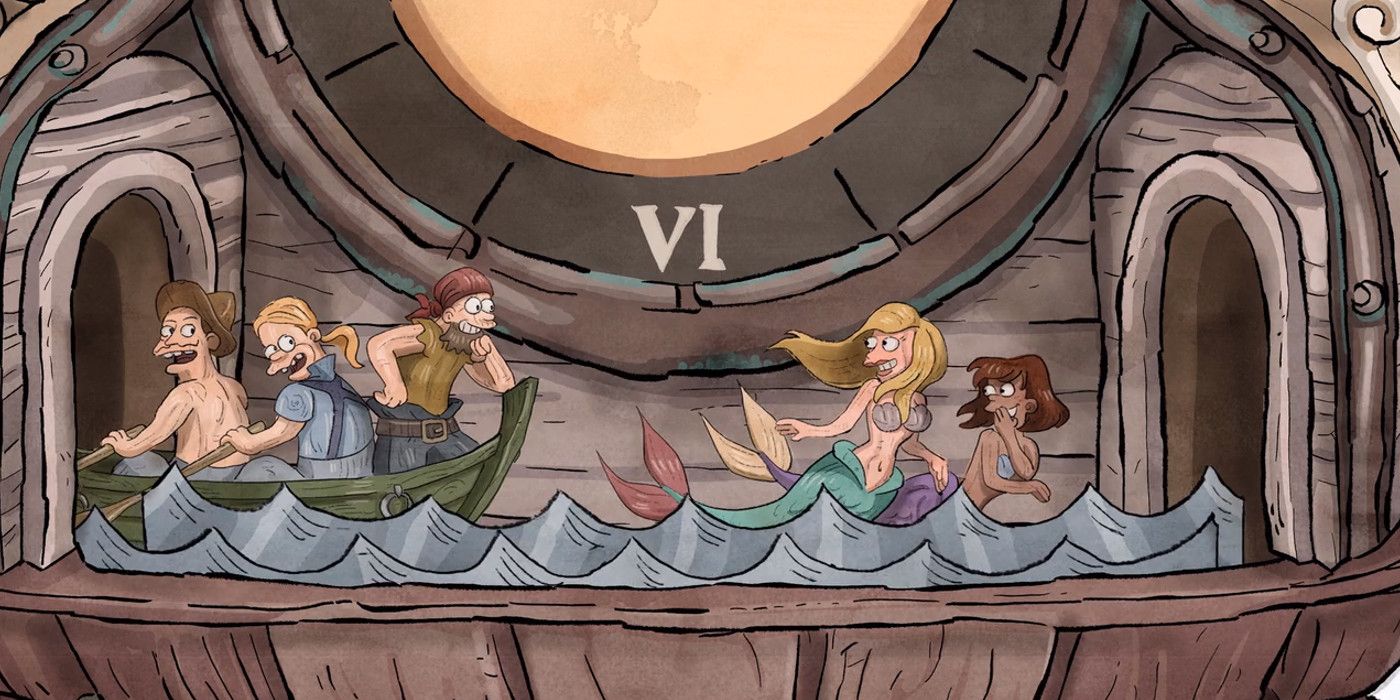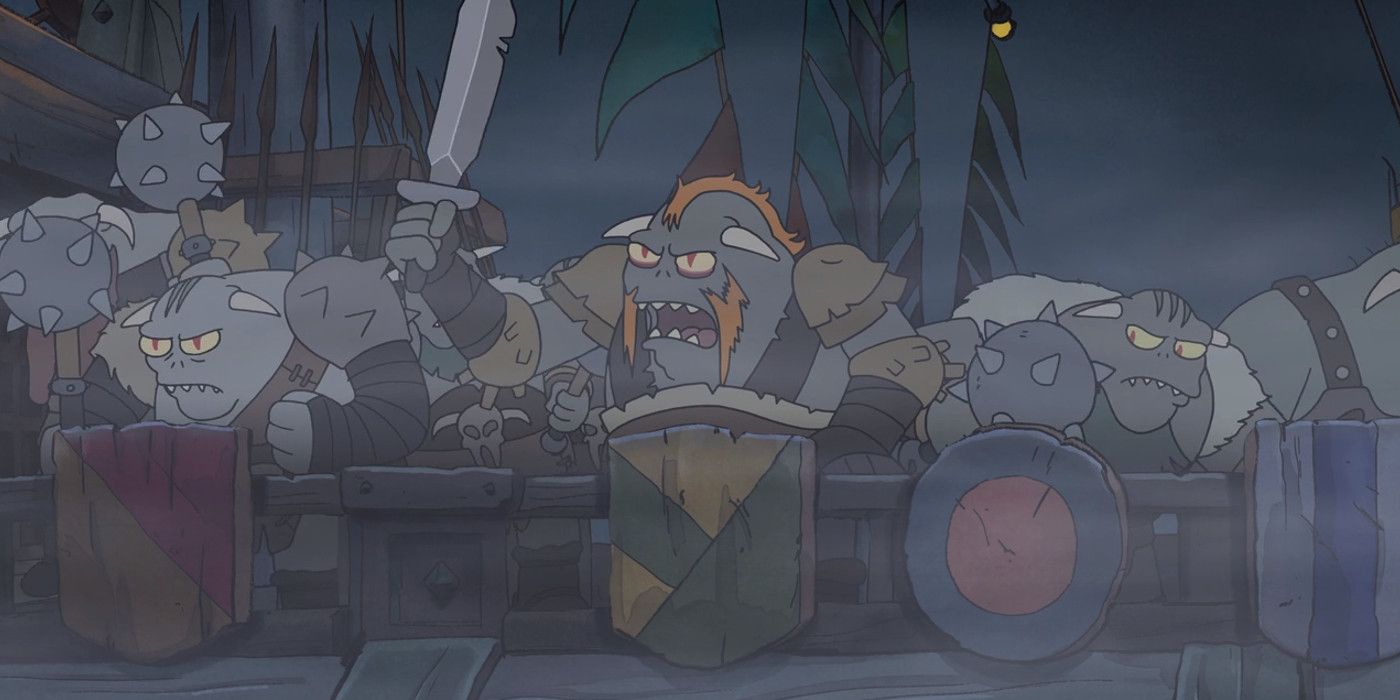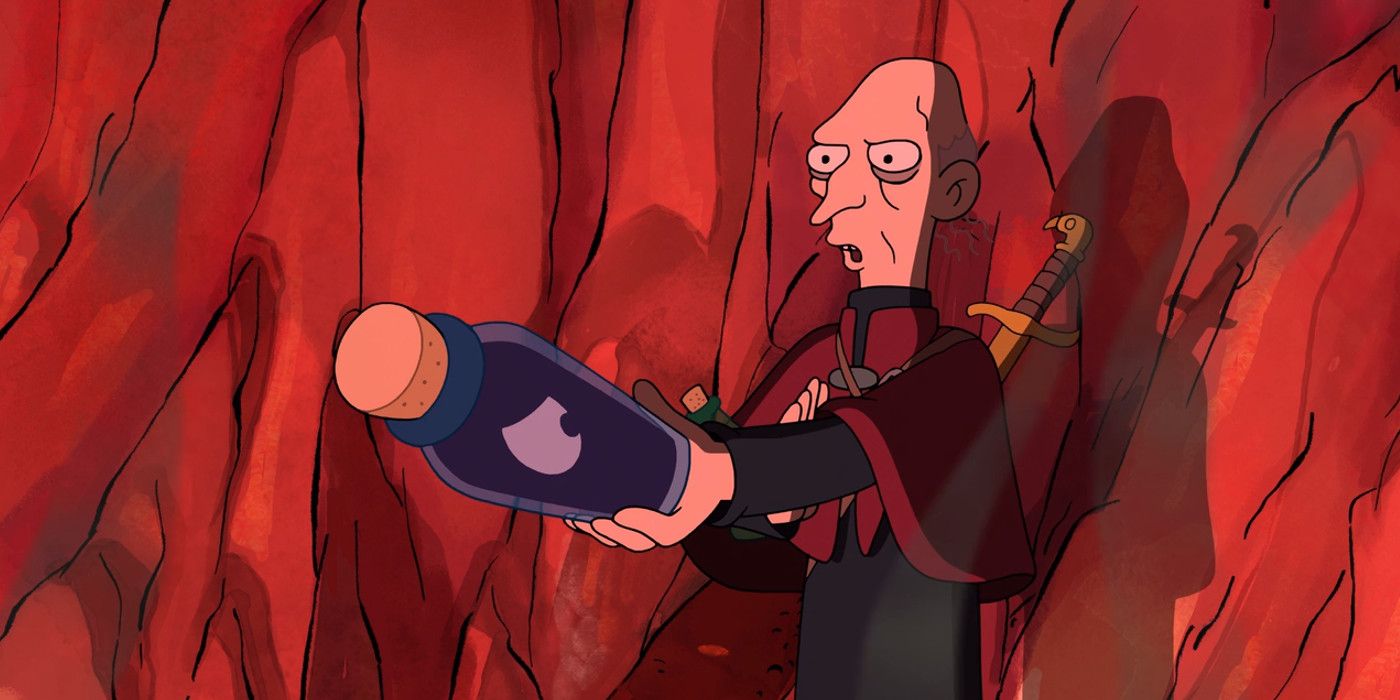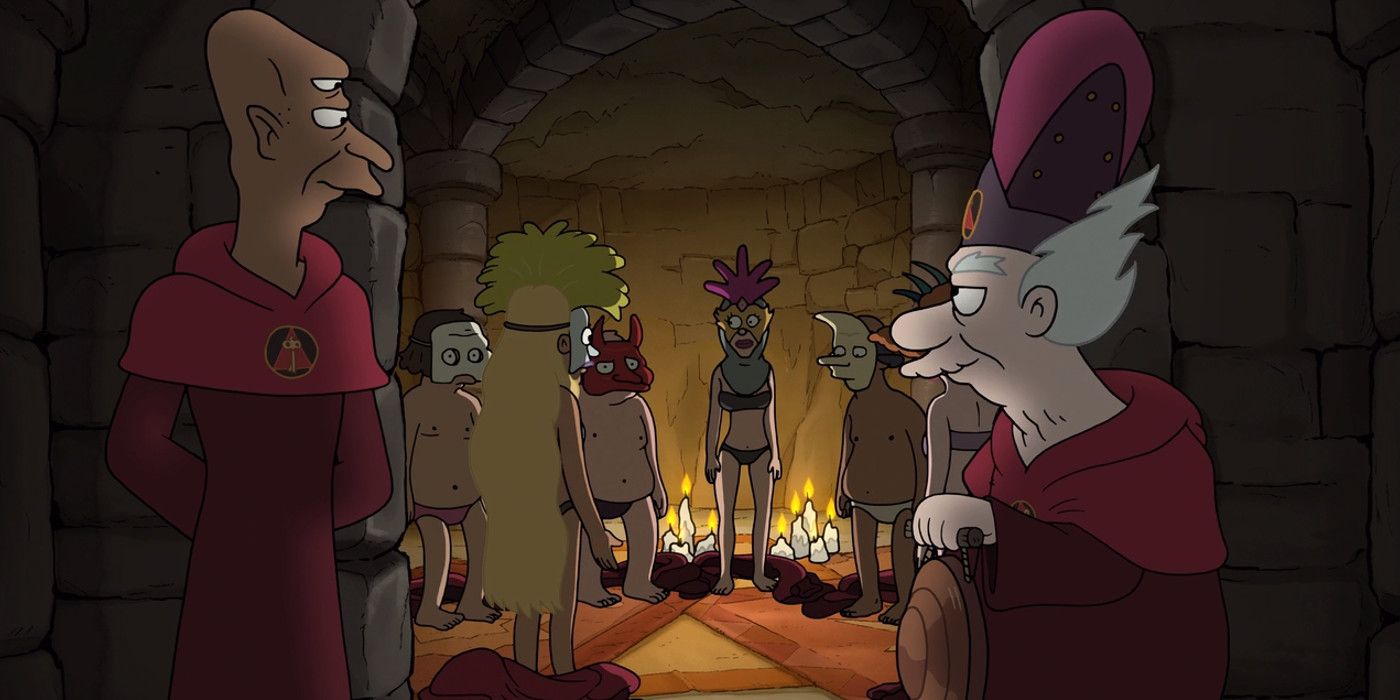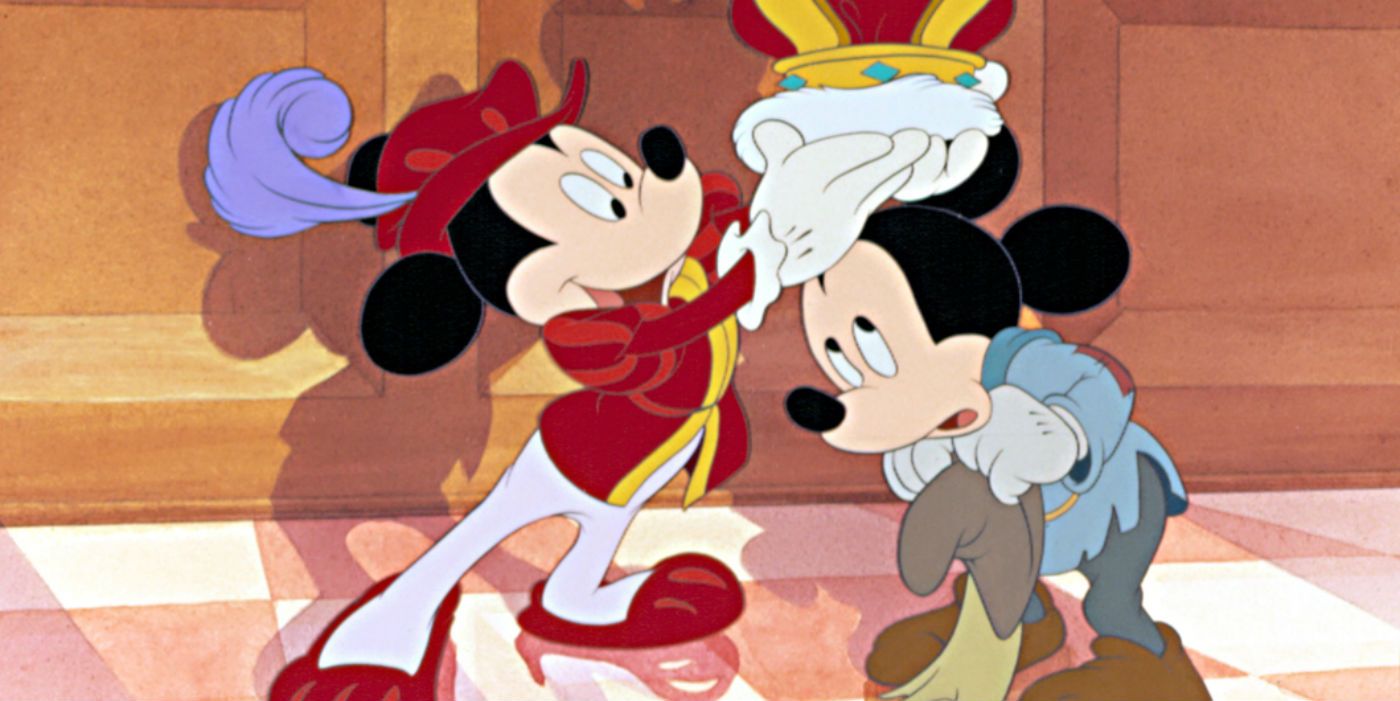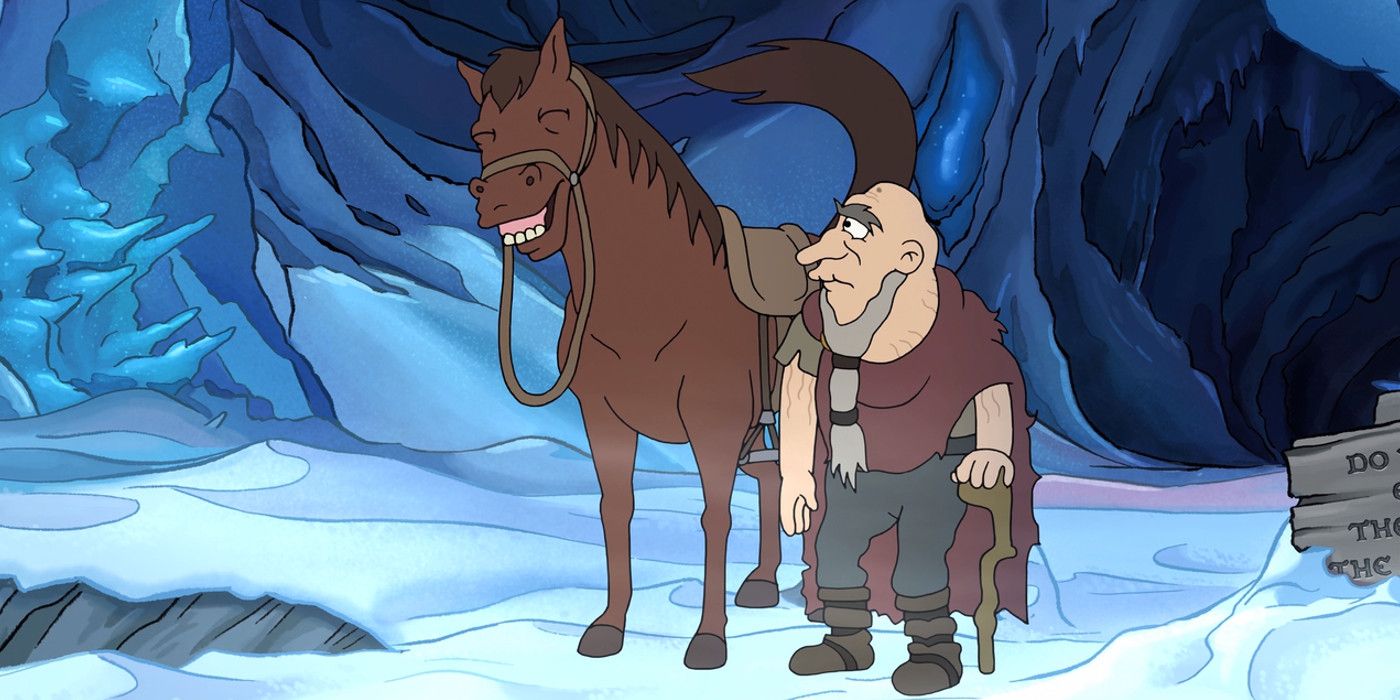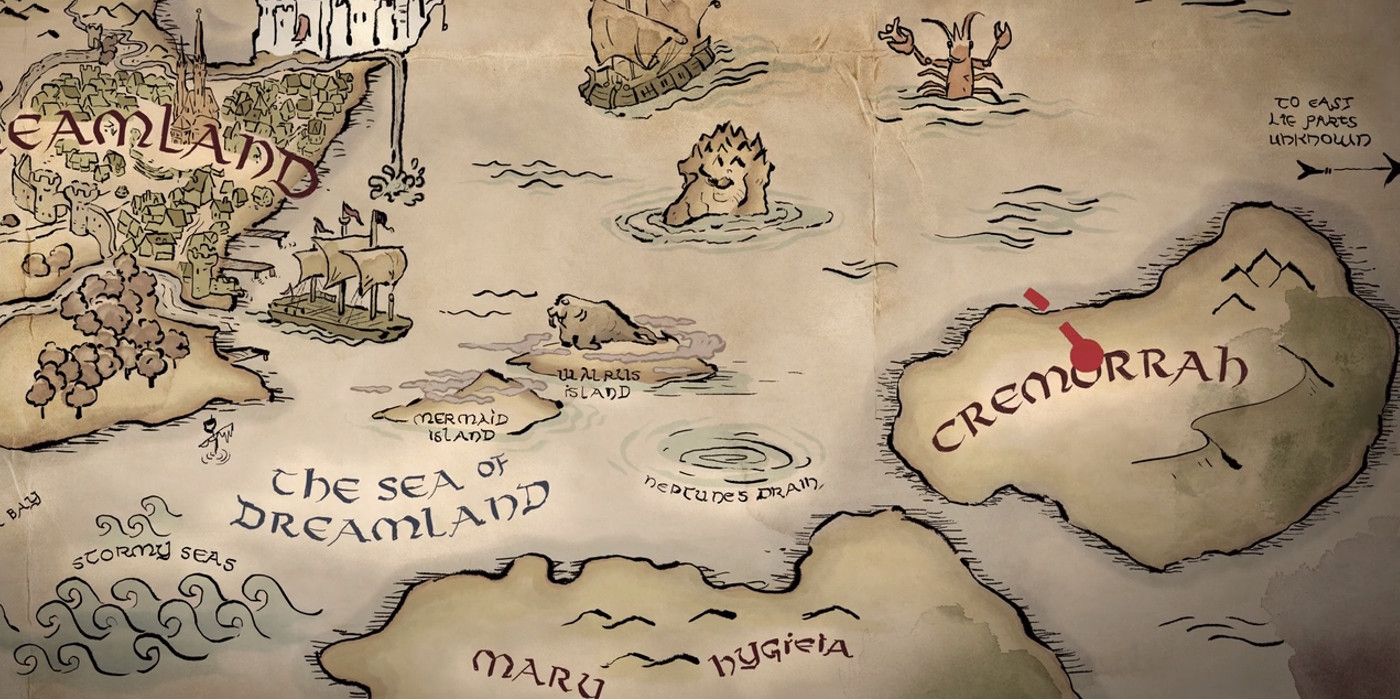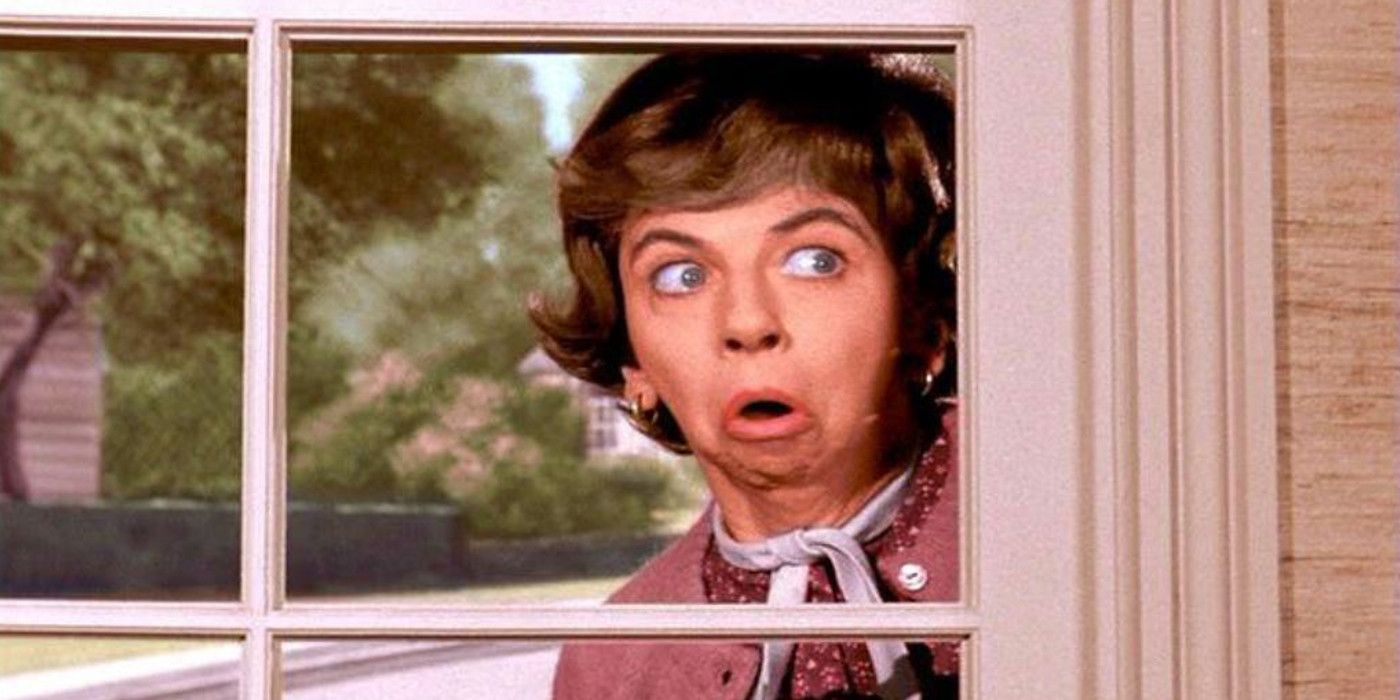WARNING: The following article contains SPOILERS for Disenchantment Season 1
-
From its very first trailer, it was clear the new Netflix series Disenchantment would be as packed full of references to high fantasy as Futurama was with nods to various science-fiction franchises. With riffs ranging from classic fairy tales to specific take-offs of various novels, movies, and television shows, there's a plethora of gags - some surprisingly subtle and some blatantly obvious.
While Disenchantment demands repeated viewings and pausings to catch every little joke, we've still attempted to catalog what we could after a weekend of binge-watching. As always, if we missed something, please let us know in the comments.
- This Page: Game of Thrones, Monty Python and More
- Page 2: Princess Bride, Lord of the Rings and More
- Page 3: Borcs, Bozaks and a Laughing Horse
Daenerys Targaryen & Princess Bean
Visually, Disenchantment's main protagonist, Princess Tiabeanie (aka Bean) seems to be based on Daenerys Targaryen from A Game Of Thrones. Both heroines have pure white hair and favor blue clothing. There's a bit of similarity in their stories as well, as both princesses started their respective journeys on the road to adventure with a forced marriage, though Daenerys embraced her duties as Khaleesi whereas Bean struggles to escape from her responsibilities.
The Other Game of Thrones Reference
Ignoring the Daenerys/Bean connection, there's another reference to Game of Thrones in Disenchantment and it was revealed in the first full trailer when Prince Guysbert accidentally impaled himself upon a throne made of swords. Show creator Matt Groening decreed Disenchantment would not make any further references to George R.R. Martin's work after this initial gag, because comedy is built on subverting expectations and everyone was expecting the series to heavily reference Game of Thrones. Still, Disenchantment did wind up unintentionally mimicking the series, if only by presenting a series of unfortunate weddings.
Related: Disenchantment's Futurama & Simpsons Easter Eggs
The Plague Patrol's Tribute To Monty Python
One recurring background gag in Disenchantment is The Plague Patrol - a team of serfs tasked with searching the streets of Dreamland for plague-ridden corpses and delivering them to the nearest pit for safe burning. It's a thankless job, but they do it well and it is a rare thing for dead-drunk individuals lying passed out in the gutter to be picked up by accident. The whole concept seems to be a nod to a classic scene from Monty Python and The Holy Grail, where a character called The Dead Collector works a similar route job, like a medieval mailman tasked with delivering a more unpleasant cargo.
Dog's Milk
There are a number of odd vendors populating the markets of Dreamland, but the oddest may be a merchant selling fresh dog milk. What's especially odd is this seems to be a nod to a classic science-fiction series rather than a fantasy television show. "Kryten" - the second season premiere of Red Dwarf - featured a famous gag where the crew of the titular ship discovered the only milk to be found among their food supplies was dog's milk. The ship's computer Holly defended this choice, noting dog's milk lasts longer than any other kind of milk, although he was eventually forced to admit this was largely because "no bugger will drink it."
Related: First Look At Disenchantment
Disenchantment's Elves
Ignoring the obvious connection to The Happy Little Elves from The Simpsons, the Elven race of Disenchantment seems to draw off of two earlier sources. Their obsession with making sweet snacks seems to be a nod to The Keebler Elves - the mascots of The Keebler Company, who reportedly make all of the company's baked goods with magic ovens in a giant tree. The elves also seem to be a parody of The Smurfs, living as they do in a village that is magically hidden away from the rest of the world. The elves also share the naming conventions of the Smurfs, which each elf having a name based on their roles in the village or their personality, like Weirdo, Singo, Leavo or Speako. ("Speak no more of Leavo, Speako!")
Cursed Gifts
Cursed gifts at weddings and births are a common trope in mythology and fairy tales, with the witch's curse in Sleeping Beauty being perhaps the most famous. Princess Bean finds herself similarly cursed with a literal personal demon named Luci contained within one of her wedding presents. Luckily for her, Luci's only duty is to urge her toward wickedness and Luci is smart enough to realize he doesn't have to work that hard to push Bean to be disobedient, drunk and disorderly.
Page 2: Princess Bride, Lord of the Rings and More
Disenchantment's Gnomes
The tradition of small statues acting as guardians of gardens dates back to Ancient Rome, but the trend of sculpting these statues to resemble comical gnomes started back in mid-19th century Europe. The most popular image today of gnomes as old men with big white beards and red, pointed caps comes from a series of books by Rein Poortvlet and Wil Hyugen. Their designs also inspired the classic cartoon series The World of David The Gnome. The gnomes of Disenchantment resemble the kindly David superficially, but they are fierce fighters who give a good accounting of themselves despite their diminutive size.
The Gnome/Ogre War
The war between the gnomes and the ogres depicted in "A Princess, an Elf, and a Demon Walk Into a Bar" sounds like it should be a one-sided affair, yet the gnomes employ tactics that allow them to overcome their larger foes and prove amazingly agile at dodging the attacks of the ogres. This may be a nod to Dungeons and Dragons, where gnome characters got a substantial bonus to their Armor Class when facing ogres, trolls, and any other giant-type monster.
Related: 15 Dungeons & Dragons Rules That Make Absolutely No Sense
Princess Bride References
The first two episodes of Disenchantment contain a number of nods to The Princess Bride. Chief among these is the plot, which sees a princess fleeing from an arranged marriage into a dark forest full of fearsome animals, though admittedly the Rodents of Unusual Size are more dangerous than the Racist Antelope. There's also a parallel to be drawn between the villainous Prince Humperdink and the less villainous (but still creepy) Prince Merkimer, as both claim to be the finest hunters in the world while leading the search for their runaway brides. There's even a sequence in both stories where the princess escapes her pursuers by tumbling down a steep hill and the scene where Bean pulls herself up to the cliff-based home of The Wishmaster on a hand-powered elevator seems to be inspired by The Cliffs of Insanity.
King Zog's Best Trackers
When Princess Bean goes on the run, her father King Zog summons his best trackers to lead the efforts to find her. Unfortunately, it seems his two best trackers - Stryker and Bolt - got lost somewhere, so they have to settle for the less-skilled Turbish and Mertz. The name of Stryker seems to be a play on Strider - one of the many names given to Aragorn in The Lord of The Rings. Bolt may be a similar play on the name of Halt - a master ranger from the Ranger's Apprentice series of fantasy novels, who mentors the titular apprentice ranger, Will.
The Fairy and Disney's Tinkerbell
When they first enter into the Enchanted Forest, Princess Bean, Luci and Elfo encounter a fairy who has "done a trick or two." Voiced by Tress MacNeille, The Fairy shows up again in later episodes. With her blonde hair, butterfly wings and green dress, The Fairy is clearly modeled on perhaps the most famous fairy in popular culture: Tinkerbell from Disney's Peter Pan.
The Elixir Of Life
Most of Disenchantment's chief plot involves King Zog's search for The Elixir of Life. Though it is called by many different names, legends of a potion that can cure any illness or grant immortality and vessels like The Eternity Pendant that can transform any liquid into such an elixir can be found in the myths of nearly every ancient culture on Earth. The Holy Grail is perhaps the most famous of these objects in Western culture, though The Philosopher's Stone (which informed most of the first Harry Potter book) is a close second.
Related: The World of Disenchantment: Dreamland & Mythology Explained
Mermaid Island & Walrus Island
"For Whom The Pig Oinks" sees Bean arranging a bachelor party on a barge sailing past Mermaid Island for Prince Merkimer. The Mermaids of Disenchantment are inspired by the Sirens of Ancient Greek myth, using their song to lure foolish men to their doom. The party barge captain combats this in the same way as the hero Odysseus - by encouraging his customers to put wax in their ears or be tied to the mast of his ship. He also warns the men against swimming toward the nearby Walrus Island by mistake - a nod to the current belief that the legends of mermaids may have been inspired by manatees, who might look pretty good to a lonely or near-sighted sailor after several months at sea.
Page 3: Borcs, Bozaks and a Laughing Horse
Borcs and Bozaks
The party barge in "For Whom The Pig Oinks" is later attacked by creatures who are misidentified as Borcs - a clear parody of the Orcs from The Lord of the Rings. Later, after having been handily slaughtered by Prince Merkimer and an army of walruses, these creatures are revealed to have been Bozaks - allies of Dreamland en route to Princess Bean's wedding. In the Dragonlance setting of Dungeons and Dragons, Bozaks are a specific species of the evil dragon-men known as Draconians.
Lord of the Rings References
The Lord of The Rings books and films are probably the single most referenced fantasy franchise in Disenchantment. Apart from the aforementioned references to Strider and Orcs, the show also pays tribute to Mount Doom and the destruction of The One Ring with Mt. Piping Hot Suckhole - the volcano where exorcist Big Jo disposes of captured demons. There's also a nod to the magical property of elvish swords glowing blue in the presence of orcs, with The Eternity Pendant glowing and making a musical tone whenever an elf comes close to it.
The Secret Of The Secret Society
In "Castle Party Massacre," Princess Bean uses her father's sudden trip to a health spa as an excuse to throw a party. At the same time, the king's advisers Sorcerio and Odval use his absence an excuse to call a meeting of their secret society that "conducts great matters of state and diplomacy." They also have sex in weird costumes. This is likely a reference to the rumored behavior of real-world secret societies like The Hellfire Club, but seems to be specifically modeled on the party Tom Cruise's character crashes in the movie Eyes Wide Shut.
Related: Disenchantment Cast Guide
The Prince(ss) And The Pauper
In "Swamp and Circumstance", as King Zog is once again shouting at Bean for her boorish behavior, Bean complaints about how distant Zog is and how he barely even noticed when she traded places with a pauper for a year. This is a nod to The Prince and the Pauper - a story by Mark Twain about a poor youth trading places with a prince. The story has been adapted several times since then, with Disney creating an animated version starring twin versions of Mickey Mouse.
The Laughing Horse
Talking animals are a standard trope in fairy tales. While the laughing horse in "The Limits Of Immortality" seems like a parody of this, it's actually a reference to the Slavic epic poem Bylina. Sadko, the hero of the tale, owned a magical laughing horse who would bring doom to anyone who tried to steal it from its rightful owner. Though Sadko's exploits are not well known in the Western world, fans of Mystery Science Theater 3000 may remember the horrific laughing horse from The Magic Voyage of Sinbad - a Russian film adaptation of Bylina that was redubbed into a Sinbad story.
Neptune's Drain
The map of the world around Dreamland reveals all manner of dangers. One of these is a whirlpool labeled Neptune's Drain. Give its proximity to Mermaid Island and Walrus Island, it's possible Neptune's Drain is based on Charybdis - another monster from Greek mythology described as a sentient, all-consuming whirlpool that was the child of Neptune and Gaia. Presumably, the question of how someplace can be named for the Roman god of the seas when there's no Rome in Disenchantment and they're still starting their own religions will be answered in the second season.
The Lady Kravitz
As "To Thine Own Elf Be True" opens, King Zog is informed by his herald Princess Bean and her "crew of misfits" have been spotted by Lady Kravitz, "who happened to be peering out her window at just the right moment. " This is a reference to the classic fantasy sitcom Bewitched, where the nosy neighbor Mrs. Kravitz was always glancing out the window just in time to see whatever magical nonsense was occurring in The Stevens' house that week.
-
Is there an Easter Egg we missed? Sound off in the comments!

